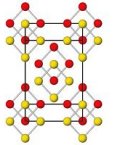 I received a press release today from a US company addressing me by name and asking me whether I’d like to write about nanocardiology. Apparently, the company has a nanotech product in pre-clinical trials that cleans up arterial plaques. The putative product from St Louis company Kereos is based on endothelial alpha-v-beta-3 integrin-targeted fumagillin nanoparticles and can seek out markers for arterial plaques and help break them down.
I received a press release today from a US company addressing me by name and asking me whether I’d like to write about nanocardiology. Apparently, the company has a nanotech product in pre-clinical trials that cleans up arterial plaques. The putative product from St Louis company Kereos is based on endothelial alpha-v-beta-3 integrin-targeted fumagillin nanoparticles and can seek out markers for arterial plaques and help break them down.
Obviously, the implications for prevention and treatment of cardiovascular disease could be enormous, and the medical profession will be keen to see whether the company is successful with this product once it moves on to the clinical stage.
Remarkably though, the person who sent the press release signed off with a rather flippant remark: “Now bring on the cheeseburgers!”
Okay, it’s a joke. Haah, haah. But, hidden within that seemingly throwaway remark is decades of meat-eating substance abuse and an attitude to diet and health that underlies the very reason we in the west, and in particular in the US, are suffering such tragic levels of obesity, diabetes, hypertension and heart disease, surely?
We cannot continue to shovel in vast quantities of fatty red meat smothered with reconstituted dairy products and a guilty sliver of gherkin without long-term repurcussions. Never mind the vast tracts of wilderness, rainforest, and habitat that is being raised so that beef stocks can remain secured. Never mind the huge fences that segregate our cattle from the wildlife and in so doing block migratory routes to seasonal watering holes that have existed for countless millennia.
But, don’t worry about the buffalo and the wildebeest, the rainforest canopy, or the other effects of overindulgence on your health. Let’s all carry on eating those cheeseburgers safe in the knowledge that we’ll soon be able to pop a little pill that will scrape our arteries clean before that first heart attack.
 John Mather of NASA Goddard Space Flight Center and George Smoot of the University of California, Berkeley, share this year’s Nobel Prize in Physics for their discovery of the blackbody form and anisotropy of the cosmic microwave background radiation.
John Mather of NASA Goddard Space Flight Center and George Smoot of the University of California, Berkeley, share this year’s Nobel Prize in Physics for their discovery of the blackbody form and anisotropy of the cosmic microwave background radiation. I received a press release today from a US company addressing me by name and asking me whether I’d like to write about nanocardiology. Apparently, the company has a nanotech product in pre-clinical trials that cleans up arterial plaques. The putative product from St Louis company Kereos is based on endothelial alpha-v-beta-3 integrin-targeted fumagillin nanoparticles and can seek out markers for arterial plaques and help break them down.
I received a press release today from a US company addressing me by name and asking me whether I’d like to write about nanocardiology. Apparently, the company has a nanotech product in pre-clinical trials that cleans up arterial plaques. The putative product from St Louis company Kereos is based on endothelial alpha-v-beta-3 integrin-targeted fumagillin nanoparticles and can seek out markers for arterial plaques and help break them down. Nature described this finding as “surprising, elegant, and entirely useless”. Well, the journal is half right. Solid elemental oxygen is not thought to exist anywhere on earth or even elsewhere in the universe under the immense pressures created by Malcolm McMahon and Paul Loubeyre. They and their colleagues put the squeeze on solid oxygen, which forms deep red crystals at above a million atmospheres. They used various techniques to determine the structure of this new material and found that oxygen atoms team up to form clusters of eight in the solid. A seemingly esoteric discovery you might think.
Nature described this finding as “surprising, elegant, and entirely useless”. Well, the journal is half right. Solid elemental oxygen is not thought to exist anywhere on earth or even elsewhere in the universe under the immense pressures created by Malcolm McMahon and Paul Loubeyre. They and their colleagues put the squeeze on solid oxygen, which forms deep red crystals at above a million atmospheres. They used various techniques to determine the structure of this new material and found that oxygen atoms team up to form clusters of eight in the solid. A seemingly esoteric discovery you might think.